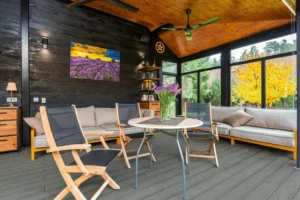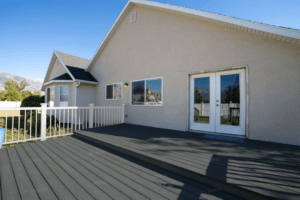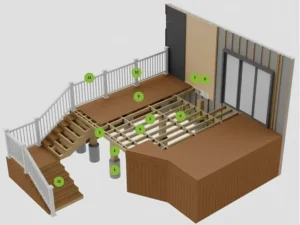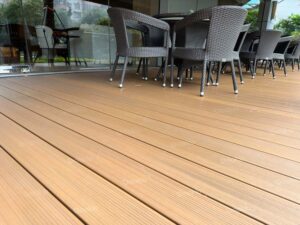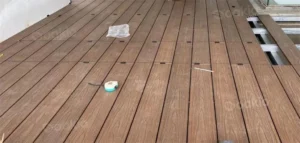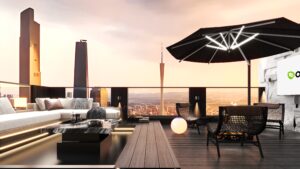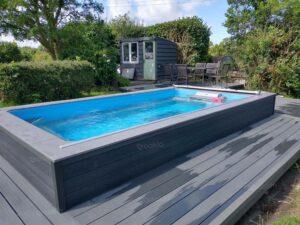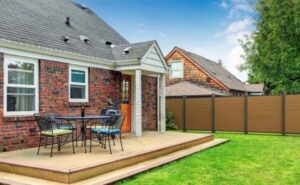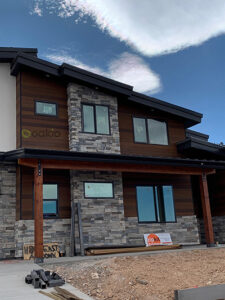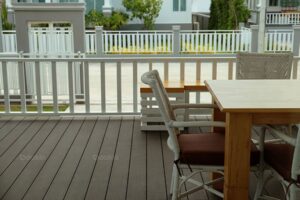Solid Wood vs WPC: Which One Is the Best Wood For Decks?
When decorating a house, it is often hard to decide the deck materials. WPC and solid wood are two popular materials, each with its own characteristics, suitable for different usage scenarios and needs. This article will compare the characteristics of these two materials in detail to help you know the best wood for decks.
What is Solid Wood?
Solid wood is a floor material directly processed from natural wood, retaining the complete natural texture and characteristics of wood. Common solid wood materials include oak, teak, walnut, maple and other tree species, each of which has its own unique colour and texture.
The biggest feature of solid wood decking is its natural warm texture and good foot feel, which can regulate indoor humidity and create a warm and natural living atmosphere. However, solid wood is more sensitive to the temperature and humidity of the environment and requires regular maintenance to maintain its best condition. High-quality solid wood decking can last for decades and can even be passed down from generation to generation.
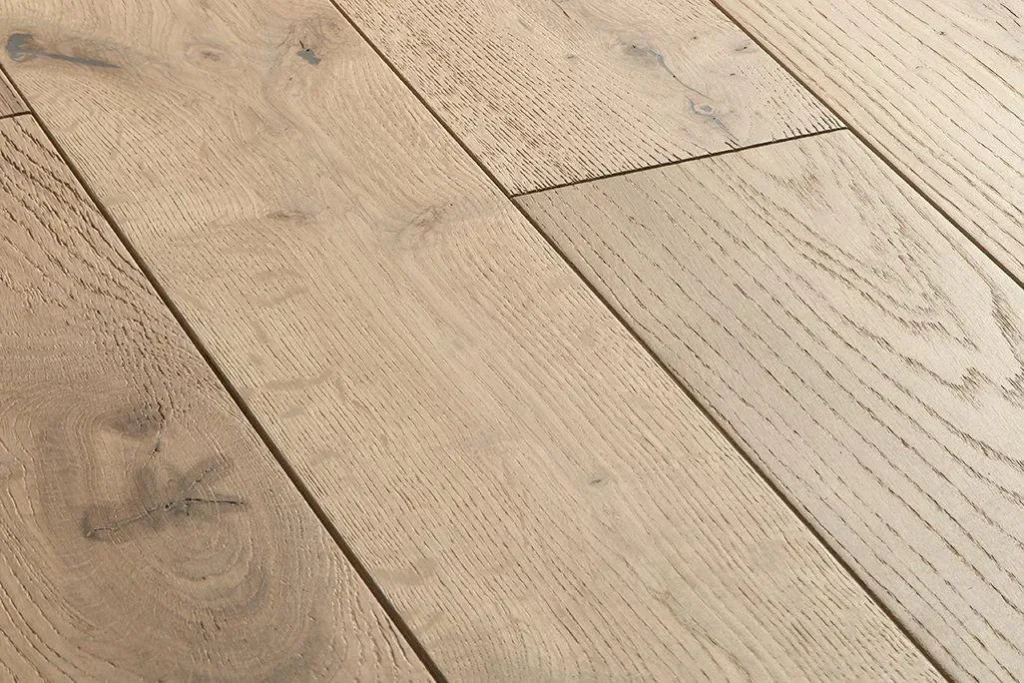
What is WPC?
WPC (Wood-Plastic Composite), is a new environmentally friendly material made of wood fiber or wood powder mixed with thermoplastic plastics (such as PE, PP, PVC, etc.). It not only retains the natural texture and texture of wood, but also has the waterproof and anti-corrosion properties of plastic.
WPC decking usually has excellent weather resistance, which means it is not easy to crack and deform, and requires almost no special maintenance. It is very suitable for usage in humid environments such as swimming pool area and outdoor patio. Modern manufacturing technology has made the appearance of high-end WPC products very close to real wood, becoming the first choice of many pragmatists.

Solid Wood vs WPC: Which One Is the Best Wood For Decks?
1. Material Properties & Applications
Solid Wood:
The natural characteristics of solid wood decking give it an advantage in comfort and aesthetics. Its warm foot feel and natural humidity control ability make the indoor environment more livable, especially suitable for main living areas such as bedrooms and living rooms.
However, solid wood is more sensitive to changes in humidity and temperature, and may expand, deform or even mold when used in humid areas or basements. Therefore, when installing solid wood decking, it is necessary to ensure that the indoor humidity is controlled between 40%-60% and avoid prolonged contact with water stains.
WPC:
WPC decking is an ideal choice for humid environments such as balconies and outdoor area because of its excellent waterproof performance. It will not deform due to moisture, nor will it breed mold, and the maintenance cost is extremely low. In addition, the structural stability of WPC decking is relatively high, and it will not crack or gap with seasonal changes like solid wood.
However, WPC has a high hardness, and standing for a long time may not be as comfortable as solid wood, and some WPC decking may become slightly hot under extreme high temperatures.
2. Durability & Maintenance
Solid Wood:
The lifespan of solid wood decking can usually reach decades or even hundreds of years, and high-quality hardwood floors can even be passed down from generation to generation. Its surface can be polished and refurbished many times to restore it to its new state, but in daily use, it is necessary to avoid scratches from hard objects and long-term direct sunlight, otherwise it is easy to wear or fade.
In addition, solid wood floors need to be waxed or oiled regularly to maintain their gloss and protective properties, which increases the long-term maintenance cost to a certain extent.
WPC:
The lifespan of WPC decking is generally 15-25 years. Although it cannot be polished and refurbished like solid wood, its surface wear-resistant layer can effectively resist scratches and daily wear. Since WPC hardly absorbs water, it can be wiped directly with water when cleaning, without special care, which is very suitable for busy modern families or commercial places.
However, if the WPC decking is seriously damaged, it usually needs to be replaced as a whole, and it cannot be partially repaired like solid wood.
3. Environment & Health Considerations
Solid Wood:
Solid wood decking is very environmentally friendly if it uses FSC-certified sustainable wood. It does not contain artificial chemical additives, does not release harmful gases, and can be naturally degraded or recycled after being discarded.
But excessive logging of rare wood may put pressure on forest resources, so sustainably managed wood species should be given priority when purchasing.
WPC:
WPC decking is usually made of recycled plastic and wood waste, which helps to reduce resource waste. However, some low-end products may contain formaldehyde or other additives, so environmental certification should be recognized when purchasing. The recycling of WPC is more complicated because the composite structure of wood and plastic is difficult to separate.
4. Installation & Price
Solid Wood:
The installation of solid wood decking is more complicated, usually requires professional construction, and has high requirements for the flatness of the base. After installation, it is necessary to adapt to the environment for 1-2 weeks, and the wood can be used normally after it stabilizes.
The initial cost of solid wood is high, and high-end wood can reach more than $140 per square meter, but in the long run, its value retention and renovation characteristics make its overall cost more reasonable.
WPC:
The installation of WPC decking is relatively simple, and many products adopt a snap-on design, which is even suitable for DIY installation. Its price range is wide, and mid-range products are about $30-$100 square meter, which is more cost-effective than solid wood. However, since WPC cannot be refurbished and needs to be replaced after damage, the long-term use cost may not be much lower than solid wood.
How to Choose the Best Wood For Decks
If you pursue natural texture, comfortable foot feel and long-term value, and the living environment has moderate humidity, solid wood decking is undoubtedly a better choice. It is especially suitable for families who pay attention to the quality of life and are willing to spend time on maintenance.
For humid areas, outdoor spaces or high-traffic commercial places, the waterproof, wear-resistant and low-maintenance characteristics of WPC decking make it more advantageous. Busy office workers or rental owners may also prefer the practicality of WPC.
Conclusion
Solid wood and WPC decking each have their own advantages and disadvantages. The key to choosing is to match personal needs and actual environment. With the advancement of technology, the gap between the two is narrowing, and even new composite materials that combine the beauty of solid wood and the stability of WPC have appeared on the market.
It is recommended that consumers experience the touch of different materials on site before purchasing, and comprehensively consider the budget, usage scenarios and maintenance costs to find the ideal floor that suits them best.
Trending Reading
What Are the Differences Between the WPC Board and PVC Board?
[2025 Update] How Long Does WPC Decking Last?
